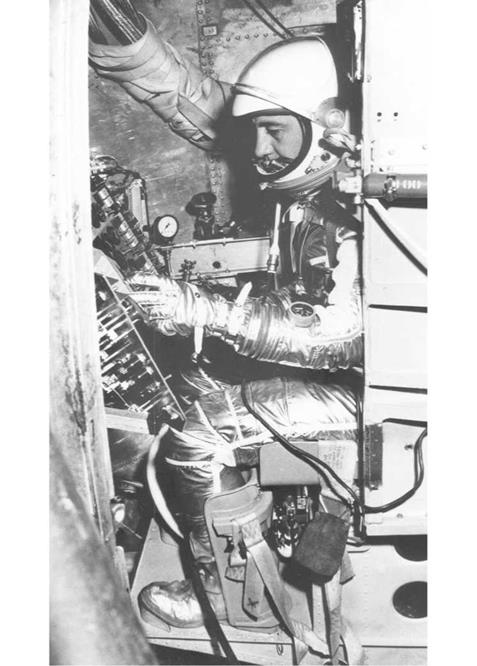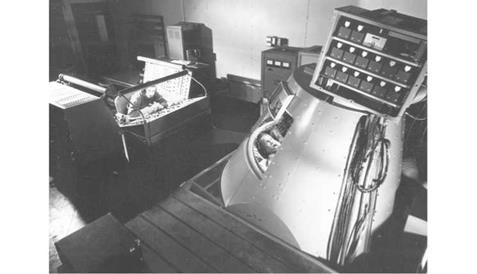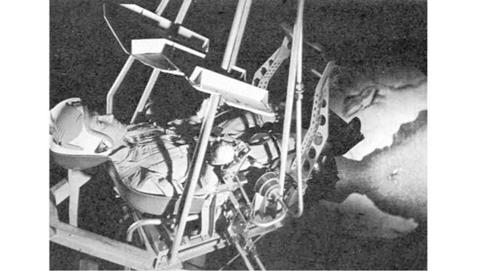TRAINING INTENSIFIES
On 4 April, Glenn, Grissom and Shepard left for Pennsylvania to undertake refresher tests at the Naval Air Development Center in Johnsville, just outside of Philadelphia. The center had once served as an aircraft production factory but was later converted to U. S. Navy research laboratories that were studying pilotless aircraft, electronics and weapons. It was also home to a vast human centrifuge building, which assisted in researching the limits of a pilot’s tolerance to a rapid buildup of gravitational or g-forces.
Here the future astronauts were strapped into a 10-foot by 6-foot steel gondola situated at the end of a 50-foot arm, and secured in various positions relative to the applied g-force. As well, the gondola could be rotated by controllers while the high – performance centrifuge was in action. At the far working end of the centrifuge’s arm was a 4,000 horsepower electric engine to hurl the gondola and its hapless occupant around the circular chamber at high speed.
|
Grissom prepares for a dizzying ride in the Johnsville centrifuge. (Photo: NASA) |
|
John Glenn at work in the flight procedures trainer. (Photo: NASA) |
John Glenn would later refer to the Johnsville centrifuge as a “dreaded” and “diabolical” part of astronaut training. In his book, John Glenn: A Memoir, he said, “Whirling around at the end of that long arm, I was acting as a guinea pig for what a human being might encounter [whilst] being launched into space or reentering the atmosphere. You were straining every muscle of your body to the maximum… if you even thought of easing up, your vision would narrow like a set of blinders, and you’d start to black out.”6
On that occasion Grissom made two simulated Mercury acceleration profiles, which proved to be his last preflight experience on the dreaded centrifuge.
Another particularly vital training aid frequently used by the astronauts was the flight procedures trainer. A complex device, it comprised a mockup version of the Mercury capsule with all of its systems connected to exterior control panels and computers. The trainer allowed the astronauts to test their proficiency by flying simulated missions and learning how to control possible contingencies such as emergency situations.
Another valuable training device was the Air-Lubricated Free Attitude (ALFA) trainer at NASA Langley. In using the ALFA, the astronaut first strapped himself into a couch that was then finely balanced on a cushion of compressed air in order to remove any feeling of friction. Then, moving very freely on all three axes, it provided the astronaut with important practice in lightly maintaining their spacecraft at the correct orbital attitude. “This trainer provided the only training in visual control of the spacecraft,” Gus Grissom would later recall.7
|
Wally Schirra takes his turn on the ALFA training device. (Photo: NASA) |













